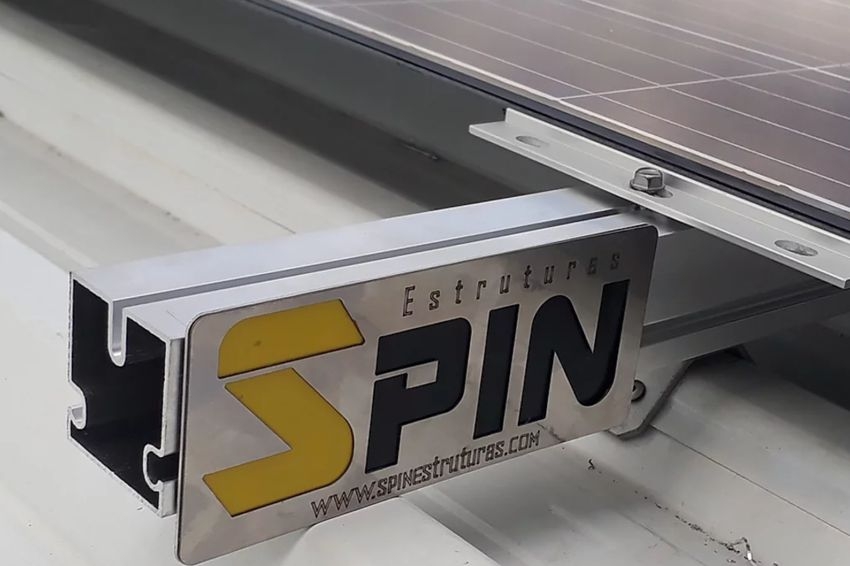Anyone who works with the installation of photovoltaic modules already knows the difficulty that hammer head screws pose. The screw must be fitted into the rail groove and turned (ideally 90 degrees).
In some cases, the rotation is not complete and the fixation ends up being precarious without the installer noticing. This incorrect installation, caused by incorrect positioning of the hammer head, impairs the robustness and reliability of the fixation.
Another problem frequently encountered by installers is the need to splice rails. Typically, the splicing system is based on a piece of rail or an additional piece that requires the use of two screws.
Splicing rails seems like a simple operation, but when you have to make dozens of splices, with dozens of screws, nuts and washers, installation can become difficult. Aiming for practicality and safety in assemblies, Spin developed a click locking system that completely eliminates the use of hammer head screws.
The figure below illustrates the system that Spin pioneered in Brazil. In this example, the “L” fastening piece is fitted into the side groove of the rail, already designed specifically for this purpose. When the screw at the base of the “L” is tightened, the locking lock is pressed down, ensuring a tight compression fit.
Furthermore, even if we could suspect the reliability of this fitting, the fixing lock does not allow the rail to move vertically, which is sufficient to guarantee the necessary security when fixing the photovoltaic modules.
What if the rail moves horizontally? Can it come loose from the latch? No, that doesn't happen. Once everything is assembled, the lock is compressed against the rail downwards, which offers a more than secure fixation.
Again, even if we could suspect the quality of this fit, when the modules are installed the locking will be complete, as the rails will be prevented from moving horizontally, whatever the direction.
See below how the system works. The support with the fixation is positioned on the support base (Figure 1). To fit and click, the installer lightly presses the “L” against the rail, without the need for any special tool. Then, tightening the upper part of the system compresses the lock downwards and finalizes the rail locking to the “L” part (Figure 2).


A very interesting advantage of this system is the ease of splicing the rails, as we see in the figure below. Anyone who has ever made track splices on a roof in the scorching sun knows what we're talking about.
The splicing problem is easily solved with the Spin fixing system, simply by positioning the rail splices on the support. The “L” support seen in this example (Figure 3) locks and holds together the two ends of the rail, without the need for additional parts, screws and tools. Everything simple and fast.















